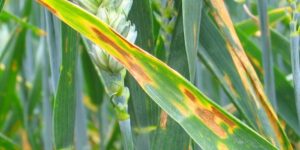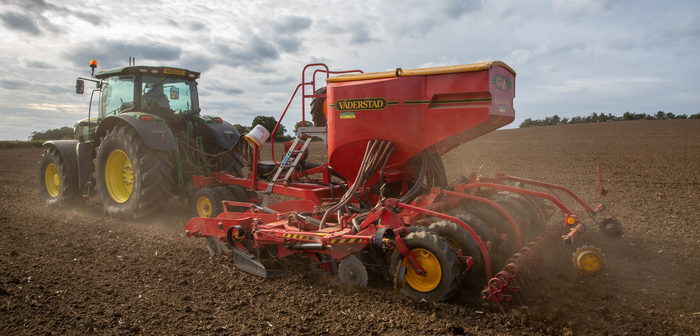Winter wheat growers considering planting early this autumn must be aware of potential downsides and take appropriate steps, warns ProCam regional technical manager, Paul Gruber.
“While the temptation to establish wheat crops early this autumn is understandable, after the washout conditions of last autumn and winter, being prepared for the added risks is crucial,” he says
“Early drilling is for people prepared to invest extra effort into managing crops, potentially for the entire season. If you aren’t able to do this, then question whether it’s right for you.”
To help growers, Mr Gruber outlines five key areas:
1. Grass weed risks
Drilling earlier increases pressures from pretty much all grass weeds, says Mr Gruber.
“Remember, we’re coming off the back of a season with high grass weed burdens in crops, after the wet weather difficulties of applying herbicides last winter. So weed seed carryover is set to be high.
“High grass weed pressures increase the need to bolster herbicide strategies – for example using a residual pre-emergence herbicide followed by a combined residual plus contact treatment at peri-emergence. But don’t rely solely on herbicides,” he stresses.
“I advise killing off at least one flush of blackgrass in stale seedbeds before drilling. Without this, it could be disastrous in fields drilled too early because huge weed numbers will germinate thick and fast in the crop.
“Also, drilling while soils are still warm will mean residual herbicides are degraded faster, shortening their period of activity. And dry soils will reduce residual herbicide performance.”
2, Disease risks
Disease pressures also increase with earlier drilling, says Mr Gruber, particularly Septoria.

Septoria tritici
“Typically, we see much more Septoria in September-drilled wheat than October-drilled. And while earlier drilling, in theory, reduces yellow rust risk, a mild winter will encourage rust build-up. This was one reason why we saw bad brown rust this year.
“Foliar disease burdens, as well as pests and weeds, are likely to be higher in second wheats, where there’s also the complication of take-all, particularly if drilling early or into stubble. Using a take-all seed treatment on true second wheat is obvious, but spring wheat and spring barley also carry take-all, and there’ll be plenty of wheat following spring barley this autumn.
“Eyespot risk is also increased in second wheat drilled early, and in first wheat after maize. Some varieties have the Rendezvous gene which increases resistance, so seek advice.”
3. Pest risks
Early drilling also encourages aphids, and therefore barley yellow dwarf virus (BYDV), says Mr Gruber. “This raises the need for timely aphicides, but ensure green bridges are also destroyed far enough ahead of drilling to ensure aphids can’t directly transfer from decaying grass weeds or volunteers, as early-planted crops can emerge quickly if conditions are conducive to growth. Also, consider varieties with BYDV tolerance or resistance, especially further south.
“Gout fly risk also increases with early drilling, so be careful if you have a history of gout fly as there’s no chemical control, or if you have grass weeds which are a gout fly host.”
4. Lodging risks
Early drilling could also have longer-term consequences, says Mr Gruber, not least increased lodging, which will not manifest until next summer.
“Choosing stiffer-strawed varieties is key. But so too is correct seed rate. Earlier drilled crops are in the ground for longer so tend to grow taller, and too high a seed rate creates densely-packed tillers and encourages taller growth.”
5. Variety considerations
Correct variety choice is vital when drilling winter wheat early, says Mr Gruber. But as well as varieties with good yield, stiff straw and good disease resistance, you want varieties that are slower developing to account for them being in the ground for longer, he points out.
“Seed rates need reducing compared with drilling later, but check what’s appropriate for each variety, location and the conditions. You don’t want crops sown too thickly. But if you’ve got grass weeds, sowing too thinly reduces crop competition.
“If home saving seed from this harvest, ensure seed is fully cleaned and tested and make sure seed batches are free of ergot, given the prevalence of this in crops this last season. Similarly, if using over-yeared seed that you couldn’t drill last winter, have this tested – not just for germination but also vigour as both can decline.”




